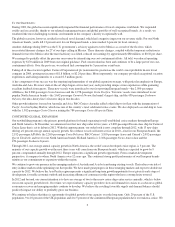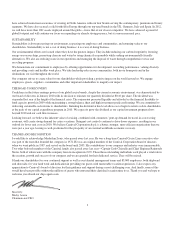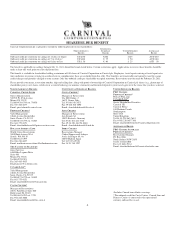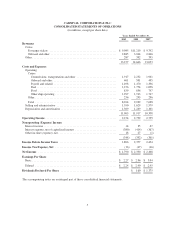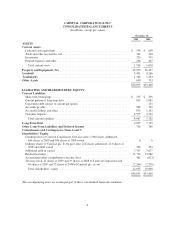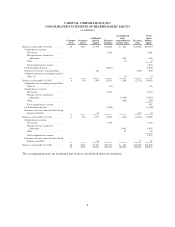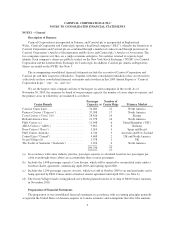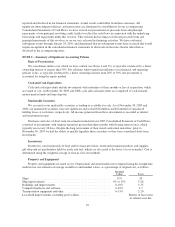Carnival Cruises 2009 Annual Report Download - page 13
Download and view the complete annual report
Please find page 13 of the 2009 Carnival Cruises annual report below. You can navigate through the pages in the report by either clicking on the pages listed below, or by using the keyword search tool below to find specific information within the annual report.Substantially all port and other taxes assessed on a per guest basis by a government or quasi-governmental
entity are presented on a net basis against the corresponding amounts collected from our guests.
Insurance and Self-Insurance
We use a combination of insurance and self-insurance to address a number of risks including, among others,
claims related to crew and guests, hull and machinery, war risk, workers’ compensation, shoreside employee
health, property damage and general liability. Liabilities associated with certain of these risks, principally crew
and guest claims, are estimated actuarially based on historical claims experience, loss development factors and
other assumptions. While we believe the estimated loss amounts accrued are adequate, the ultimate loss may
differ from the amounts provided.
Selling and Administrative Expenses
Selling expenses include a broad range of advertising, such as marketing and promotional expenses.
Advertising is charged to expense as incurred, except for brochures and media production costs. The brochures
and media production costs are recorded as prepaid expenses and charged to expense as consumed or upon the
first airing of the advertisement, respectively. Advertising expenses totaled $508 million, $524 million and $508
million in fiscal 2009, 2008 and 2007, respectively. At November 30, 2009 and 2008, the amount of advertising
costs included in prepaid expenses was not significant. Administrative expenses represent the costs of our
shoreside ship support, reservations and other administrative functions, and include items such as salaries and
related benefits, professional fees and occupancy costs, which are typically expensed as incurred.
Foreign Currency Translations and Transactions
We translate the assets and liabilities of our foreign operations that have functional currencies other than the
U.S. dollar at exchange rates in effect at the balance sheet date. Revenues and expenses of these foreign
operations are translated at weighted-average exchange rates for the reporting period. Equity is translated at
historical rates and the resulting cumulative foreign currency translation adjustments are included as a component
of accumulated other comprehensive income (“AOCI”). Therefore, the U.S. dollar value of these non-equity
translated items in our consolidated financial statements will fluctuate from period to period, depending on the
changing value of the dollar versus these currencies.
Exchange gains and losses arising from the remeasurement of monetary assets and liabilities and foreign
currency transactions denominated in a currency other than the functional currency of the entity involved are
immediately included in nonoperating earnings, unless such assets and liabilities have been designated to act as
hedges of ship commitments or net investments in our foreign operations, respectively. In addition, the
unrealized exchange gains or losses on our long-term intercompany receivables denominated in a non-functional
currency, which are not expected to be repaid in the foreseeable future and are therefore considered to form part
of our net investments, are recorded as foreign currency translation adjustments, which are included as a
component of AOCI. Net foreign currency transaction exchange gains or losses recorded in our earnings were
insignificant in fiscal 2009, 2008 and 2007.
Earnings Per Share
Basic earnings per share is computed by dividing net income by the weighted-average number of shares of
common stock and ordinary shares outstanding during each period. Diluted earnings per share is computed by
dividing adjusted net income by the weighted-average number of shares of common stock and ordinary shares,
common stock equivalents and other potentially dilutive securities outstanding during each period. For earnings
per share purposes, Carnival Corporation common stock and Carnival plc ordinary shares are considered a single
class of shares since they have equivalent rights (see Note 3). All shares that are issuable under our outstanding
convertible notes that have contingent share conversion features have been considered outstanding for our diluted
earnings per share computations, if dilutive, using the “if converted” method of accounting from the date of
issuance.
12


